Boundary of Transition, the evolving urban transformation programme
Topological (eqv.) Methodology for Architectural Boundary Making : Civic Boundary as Liberating Garrison

Boundary of Transition, the evolving urban transformation programme
Topological (eqv.) Methodology for Architectural Boundary Making : Civic Boundary as Liberating Garrison

Mapping of Topological Methodologies in 2D
Following with pilot tests on experimenting topology as an alternative methodology for making architecture, topological diagrams were transformed into contrary architectural circulation and programme-layout design respectively. Concentrating on the two dimensional plan, a new living pattern and transiting experience were provoked with the topological partition modules and transformed layout prototype. In addition, graphical representation was explored to further elaborate the idea of transition and transformation of topological boundary with time. As the summery of mid-term research, two drawings were made to show the continuity, openness and adaptability of topological space generated from its cross-dimensional quality.
Mapping of Topological Methodologies in 2D - TIME CELL & THE EDGE



Test I : Circulation by Knots Theory
Test on Circulation by Knots Theory
Ordinary Boundary Making in Euclidean Dimension
Topological Boundary Making Method by Knots Theory

Application on Circulation
Ordinary Euclidean Dimension

Topological Dimension
Result seen on Precedent Residential Design

Test on Alternative Ground Fabric

Test I : Circulation by Knots Theory
Test on Alternative Circulation Prototype


Test I : Circulation by Knots Theory
Extension and Linking of Private and Communal Space
Transitional Semi-Public-Private Buffer Space


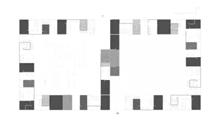


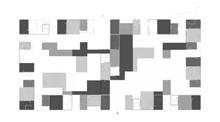




















Test I : Circulation by Knots Theory
Transformable Interface in Section



Test I : Circulation by Knots Theory
TIME CELL - with expanded programmes




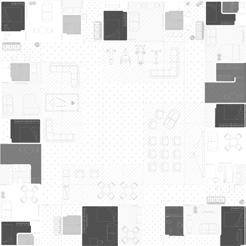





















Test I : Circulation by Knots Theory
TIME CELL - active zone of 24 hours in matrix




Test I : Circulation by Knots Theory
Cross-dimensional
Structure of TIME CELL - Hypercube


Test II : Programme by Boy's Surface
Test on Programme by Boy's Surface
Ordinary Design Methods in Euclidean Dimension
Topological Making Method by Mobius Strip

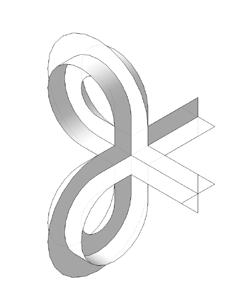


Application on Programme
Programmes’ Relationship
Diagram
Ordinary Central Core
Plan Transformation
Boundary Control on Movement - Space syntax Programme’s Relationship in Volume
Ordinary Shared Core
Detached Servant Core

Test II : Programme by Boy's Surface
Testing Prototype of High Openness Programme Layout - Office

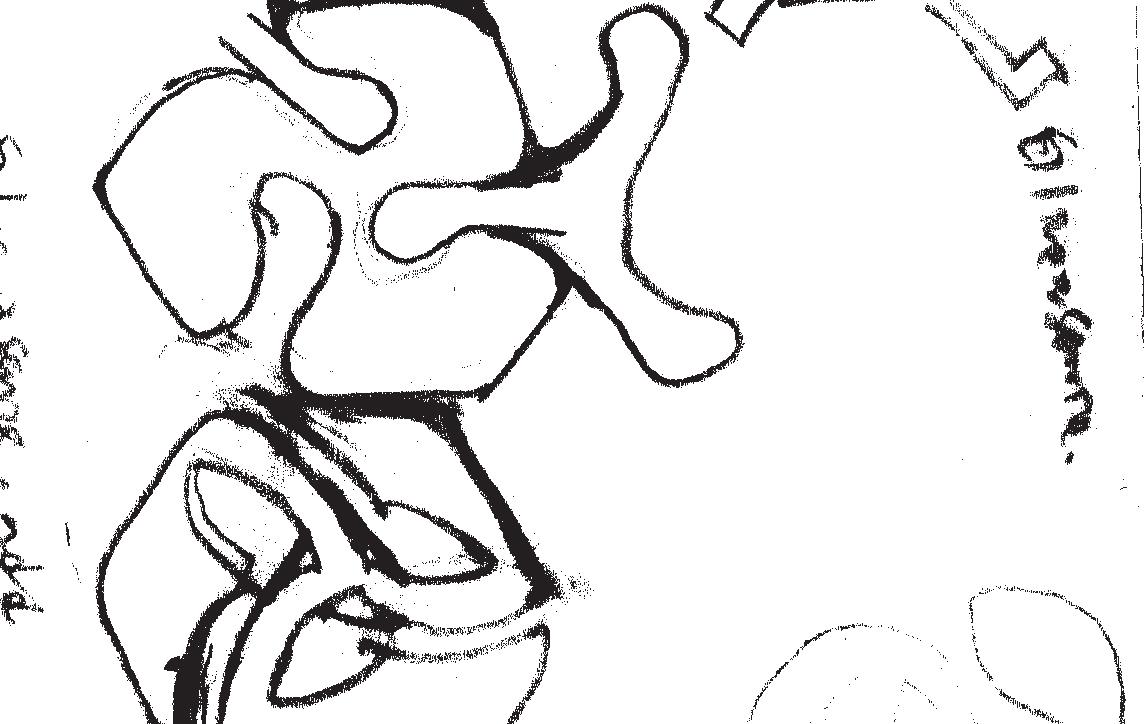
Test II : Programme by Boy's Surface
Testing Prototype of Mid-low Openness Programme Layout - Apartment



Test II : Programme by Boy's Surface
Transitional Openness of Centroid Space
Shared Common Area for meeting, storage, network servers
Shared Control Point as single security check-point

Test II : Programme by Boy's Surface
Interfaces between Servant and Served Programmes
 Outer View
Inner View
Outer View
Inner View


Test II : Programme by Boy's Surface
Transform Edge


On top of the tests on two-dimensional boundary, multiple dimensions were included for the continuation of thesis study. In order to translate the abstract qualities from Topology to the architectural design languages, the making of topological boundary in habitable dimension is the key step. Five major architectural methodologies were studied from topological elements and they were cross-referenced to produce a living prototype.
The first parameter selected was Function. Based on the previous test on programme, a 2-way tower in topological form with transiting functional layout was generated. With reference to the quality of Boy’s Surface, the distinctive programmes in the prototype tower experienced from inter-crossing separation to union simultaneously. Resulting the co-existence of connecting space and private space to be happened in the same tower under continuous transformation of floor plates in levels.
 Mapping of Topological Methodologies in Human Scale / 3D
Mapping of Topological Methodologies in Human Scale / 3D

Ordinary Design Methods in Euclidean Dimension

Topological Making Method by Mobius Strip



Study I : Function
Study 1 - Exploration on Function
Functional Layout Diagram
Plan Transformation
Boundary Control on Movement - Space syntax

Functional Layout in Volume
Ordinary Central Core
Ordinary Shared Core
Detached Servant Core








The second parameter selected was Fabric. Leading to material and structural system design in Architecture, the exploration on fabric began with the mapping of existing building systems. Categorized from unity to modulation and rigidity to flexibility, the potential quality of suitable system for topological design was revealed. The elastic, transformable modular frame system would be the topical study for the final part of thesis investigation.
The fabric of Catenoid surface and its transforming ability became the signature of topological system design. Further to the first study on Function, the fabric of topology was suggested for the design system of the 2-way tower. Beyond the application on structure, the fabric design reflects on the facade which demonstrated the heterogeneous outcome from series of homogeneous variations.
 Mapping
Mapping


Topological
Spatial Transformation by Folding









Study 2 - Exploration on Fabric
Rigidity
Catenoid Surface - Reinforced Concrete
Taichung Metropolitan Opera House Toyo Ito
Tensity
Tensile & Hexagonal Modules MeshFiberglass covered in Teflon & Laminated Timber
Centre Pompidou-Metz
Shigeru Ban
Flexability
Braid & Loop - Hollow Steel Tube
Slavin House Greg Lynn
Nurbia unit
Urbantoys Grey Lynn & Marcelyn Gow
Tessellation Folding - Deformation

Tomohiro Tachi - Ron Resch
Dome Truss - Trianglar Steel Members


Buckminster Fuller
Knots Puzzle / Bracket System - Wood
Altekruse - Chinese Dougong
AI Facade - MetShutter
Arab World Institute
Jean Nouvel

- to be discover -
Elastic Module
Application on Structural . Elevation Design

Transformable Configurations by Modulation

4-Floor Module Configuration



Tower Module for Working and Living
Connecting Routes
The third parameter selected was Circulation. Summarizing the previous test with Knots theory, a floor plan interlocking unit modules and circulation space were produced. Following the principle of continuing boundary in crossing dimensions, 4x2 types of modular unit were deducted for the varying composition of floor plans under the designated layout.
Transition of living space is allowed with the openness of boundary. There is no definite edge cutting off the private area from common area by a tangible wall. Thus space is continuous while privacy could still be kept under the topological circulation.


Ordinary Boundary Making in Euclidean Dimension
Topological Boundary Making Method by Knots Theory

Study III : Circulation
Study 3 - Exploration on Circulation
Exploration on Circulation System
Ordinary Euclidean Dimension
Topological Dimension

Result seen on Precedent Residential Design
Test on Alternative Ground Fabric



The forth parameter selected was Mechanism. With the using of mechanical joints, the configuration of boundary could be expanded into multiple sets for different levels of control. The transition of the mechanical boundary bridges incompatible forms of space as well as circulation. During the process of transition, the transformation of overall boundary and space could be captured.
In the exploration part, different numbers of joint member were illustrated for design reference use. In the application of mechanical system on above studies, the mechanical device was attached to the floor unit with multiple roles. From fully enclosed wall to flipped corridor, balcony desk to sun shading device, the form of the system changes according to each specific users and demands of every single unit. Thus the transiting of mechanical units realized the transformation of architecture with time and use.
Mapping of Topological Methodologies in Human Scale / 3DFrom Enclose to Open Boundary
Interior and Exterior Controls
Condition 1

Mechanics of Merging Two Conditions in Euclidean System
Combined Conditions by Adding
Mechanics of Merging Two Conditions by Mechanical Locks
Study IV : Mechanism
Study 4 - Exploration on Mechanism
Single Lock System
Dual Lock System
Triple Lock System
Application on Mechanical System Design Rotation I Hinge Rotation II

Potential Joint Types
Quad Lock System













The fifth parameter selected was View. From the abstract concept diagram, it represents the continuation of views from inside to outside and vice versa. There are no longer distinguishable inside and outside view within a topological boundary. For further exploration, topological view could also be enriched by folding the layers of space and boundary, in a consistence way. The outcome of view design application would be shown in more analytical way instead of strategic methods, as the proof for the successful use of topological methods during design process in a project.
The porosity and connectivity of view within boundary and space would be two of the judging qualities as the outcome of this study.


Ordinary Viewing with Euclidean Boundary
Continuous Viewing with Topological Boundary
By






Transiting IN - OUT Relationships
Enclosed Open-Plan



Porosity from Modular Composition



Semi-permeable Cover
